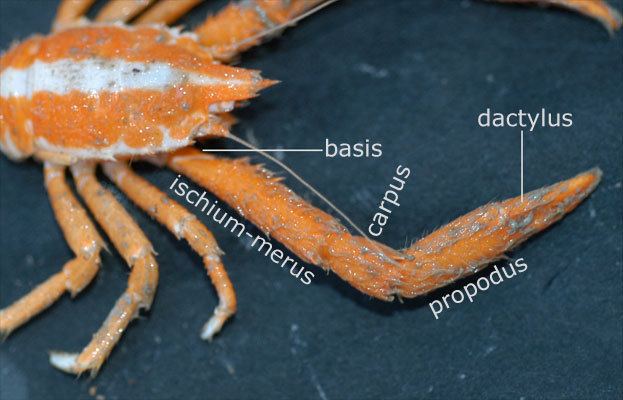Order Decapoda Rank Species | Infraorder Brachyura | |
 | ||
Similar Decapoda, Parasesarma, Neosarmatium, Perisesarma, Neosarmatium meinerti | ||
Parasesarma leptosoma top 9 facts
Parasesarma leptosoma (born 1869 in Hilgendorf), aka the Arboreal Crab, is an arboreal, leaf-eating mangrove crab, found on Rhizophora mucronata and Bruguiera gymnorrhiza, but not on Avicennia marina, and occupying an ecological niche similar to that of another sesarmid, Aratus pisonii, from the Americas.
Contents
Crabs of the family Sesarmidae are some of the most diverse and important components of mangrove estuary communities in the tropics and are not found in Europe. Two genera common in African, Asian and Australian mangroves are Parasesarma (26 species) and Perisesarma (23 species). Often colourful, they have a squarish appearance and have two transverse pectinated crests on the upper edge of the male chelar carpus. The two genera are separated by the absence in Parasesarma or presence in Perisesarma of an anterolateral tooth.
Parasesarma leptosoma occurs in mangrove estuaries along the coasts of Kenya, Tanzania, Mozambique and South Africa. In order to escape low tide predators, this species twice daily climbs mangrove stems to the canopy and feeds on fresh leaves, and is commonly found on Rhizophora mucronata, but studies suggest that it prefers the foliage of Bruguiera gymnorrhiza. Its diet also includes algae, mollusks, insects and annelids. Its aversion to Avicennia marina may be due to its secreting salt from its leaves, while both R. mucronata and B. gymnorrhiza are salt excluders. Distinguishing characters are its propodus being three times the length of its dactylus, and the carapace width only some 2 cm. Females carry the eggs, which remain attached to the swimming legs or pleopods until hatching.
Important physiological adaptations enable these crabs to feed on leaves, with no evidence of fermentation in the gut, a solution common in other animals.
